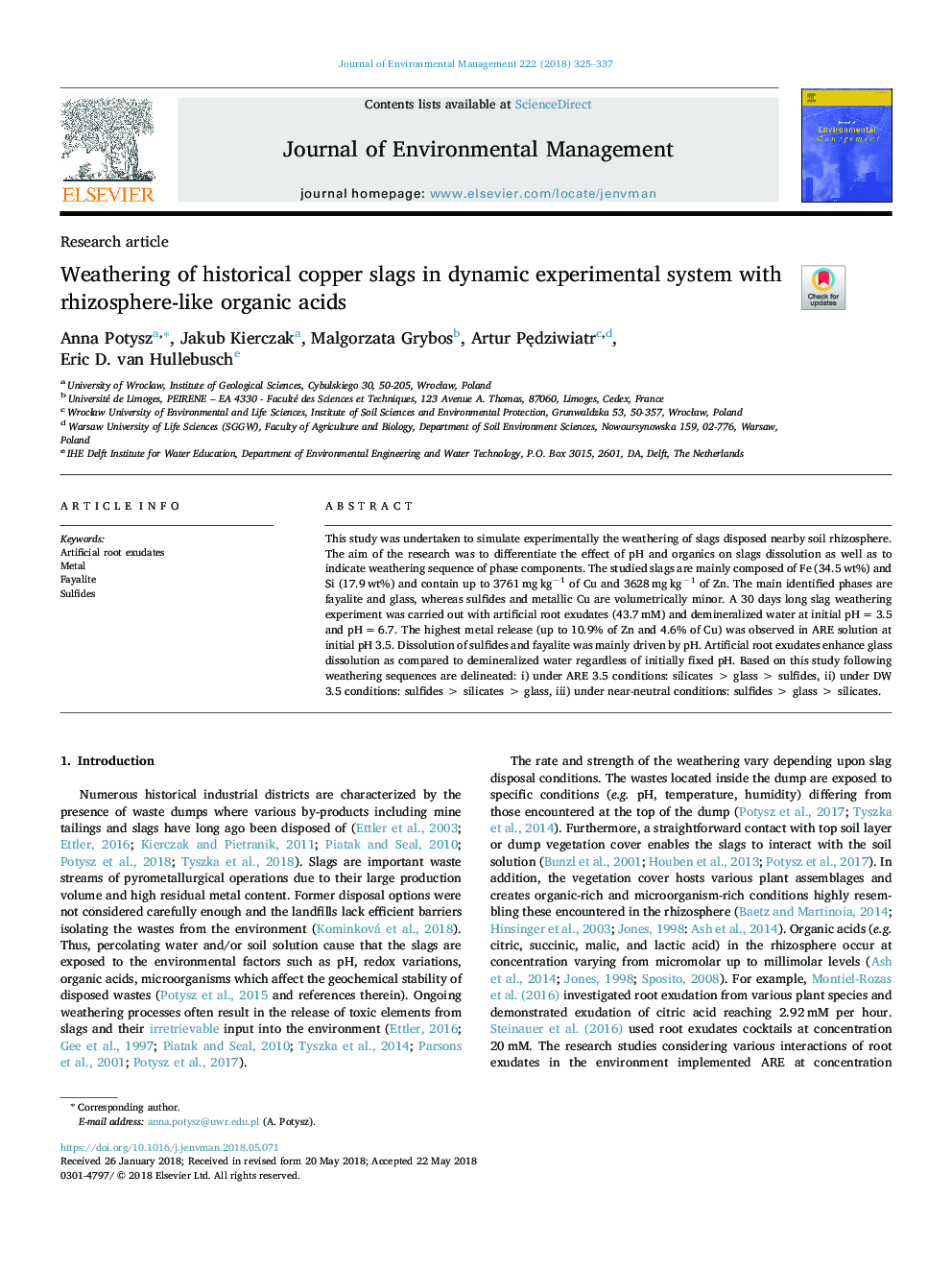| Article ID | Journal | Published Year | Pages | File Type |
|---|---|---|---|---|
| 7476236 | Journal of Environmental Management | 2018 | 13 Pages |
Abstract
This study was undertaken to simulate experimentally the weathering of slags disposed nearby soil rhizosphere. The aim of the research was to differentiate the effect of pH and organics on slags dissolution as well as to indicate weathering sequence of phase components. The studied slags are mainly composed of Fe (34.5â¯wt%) and Si (17.9â¯wt%) and contain up to 3761â¯mgâ¯kgâ1 of Cu and 3628â¯mgâ¯kgâ1 of Zn. The main identified phases are fayalite and glass, whereas sulfides and metallic Cu are volumetrically minor. A 30 days long slag weathering experiment was carried out with artificial root exudates (43.7â¯mM) and demineralized water at initial pHâ¯=â¯3.5 and pHâ¯=â¯6.7. The highest metal release (up to 10.9% of Zn and 4.6% of Cu) was observed in ARE solution at initial pH 3.5. Dissolution of sulfides and fayalite was mainly driven by pH. Artificial root exudates enhance glass dissolution as compared to demineralized water regardless of initially fixed pH. Based on this study following weathering sequences are delineated: i) under ARE 3.5 conditions: silicatesâ¯>â¯glassâ¯>â¯sulfides, ii) under DW 3.5 conditions: sulfidesâ¯>â¯silicatesâ¯>â¯glass, iii) under near-neutral conditions: sulfidesâ¯>â¯glassâ¯>â¯silicates.
Related Topics
Physical Sciences and Engineering
Energy
Renewable Energy, Sustainability and the Environment
Authors
Anna Potysz, Jakub Kierczak, Malgorzata Grybos, Artur PÄdziwiatr, Eric D. van Hullebusch,
